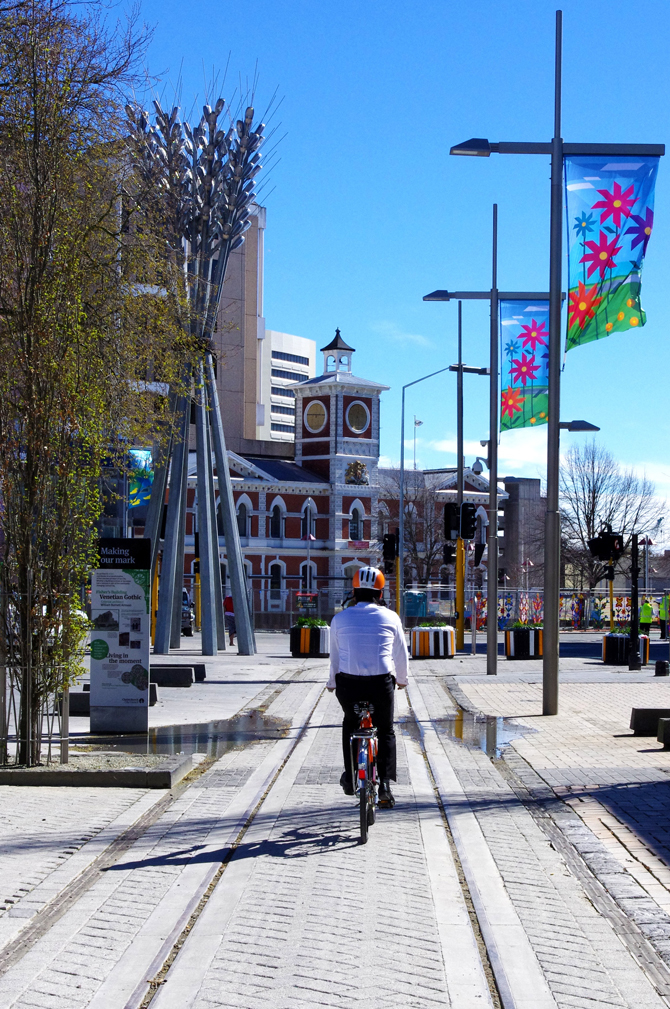Cities on two wheels
Many of us have memories of time spent on bikes, whether it’s as a child learning to cycle down a garden path, cruising with friends along the beach, or racing against competitors. For most of us, though, the days of cycling as an everyday activity are long gone; cycling is just a memory, and a distant one at that.
I learned to ride a bike at age 7. The sense of freedom and curiosity it engendered pushed me to explore my city – GuangZhou in south China – where my family lived for nine years. My fondest memory of the city wasn’t the big skyscraper or the massive shopping centres, but the time I spent cycling through the city with my family. Mum used to plan weekend day trips for the family, where we would ride to the Pearl River 20 km away. We would ride down the wide modern boulevards, find alleyway short cuts where we would stop for Hotpot lunch, and walk through the pedestrian mall to do our weekend shopping.
We could have bussed or taxied, but the trip wasn’t about that. To me, those trips were about a family spending time together, having fun, learning, exploring and, perhaps most importantly, about a mother showing a little boy a new way of engaging with his city.
I often stop and ponder how, years later, I engage with my city. Unfortunately, I find myself answering “through the windscreen of my car” too often. Cars are convenient and I love driving, but I can’t help but feel they lead to a sensorial disconnection with my environment.
Architecture and cycling are terms you don’t often find together, and people often ask me how they are related. I view cycling as a catalyst for engaging with our cities. The transportation and the mobility aspects of cycling in our dense urban spaces are certainly important, but the opportunity it provides for a truly human experience in our cities is, arguably, even more important. Architecture can be that melting pot, where the human sensory engagement and technical skills can work together to provide an urban environment with deeper emotional connections.
We don’t necessarily need a “cycling city”; no city can operate with a singular mode of transport. However, cycling does encourage a more human experience of cities that cars or other forms of public transport don’t. That said, I question the traditional method of “engineering solution” to cycling infrastructure, where cycling and its users are determined by equations and spreadsheets. Does such a solution utilise the full potential of cycling as a mode of transport? I would like to see an “architectural approach” to cycling infrastructure where we first consider the human scale – a concept by the Danish architect and Professor Jan Gehl – then mobility. Perhaps only then can we start to consider engaging with the wider benefits of cycling into our urban surroundings.
Thinking back to those fun, exploratory and exciting bike rides around GuangZhou, I find I feel the same sense of excitement every time I ride in Christchurch, where I currently live. It is one way I can truly feel connected with this beautiful city.
What do you think?
Jack Jiang is an architectural graduate with AECOM in Christchurch, New Zealand.







